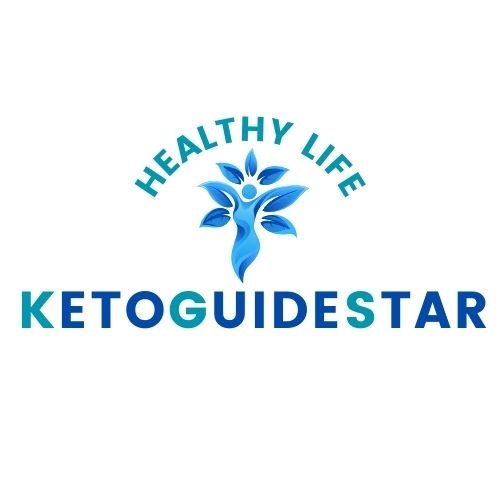Table of Contents
I explain which foods are keto friendly, and acceptable on a healthy Ketogenic Diet eating plan.
To summarize, on this list you’ll find types of fats, nuts, seeds, and proteins. Protein and fat are often found combined in a food. You’ll also see organ meats, fish, seafood, and vegetables, along with fruits, berries, liquids, and vegan proteins and fats.
Your carb intake should be between 20 and 50 grams per day; not per meal, but per day. Consume a moderate amount of protein, 3 to 6 ounces per meal. And 70 percent of your caloric intake should be fat.
I don’t count vegetables in the 20 to 50 grams of carbs. Consume half of your veggies raw, and half cooked.
And I usually recommend 7 to 10 cups of vegetables daily, most of which can easily be a salad. For example, you could have a 5 or 6 cup salad with leafy greens, and steamed or stir-fried cruciferous vegetables like broccoli or brussel sprouts. For certain veggies, cooking enhances their nutrients; others are best eaten raw to get maximum nutrients.
As far as fruit goes, limes, lemons, and berries are fine as long as you stay within your carb limit. Choose high-quality foods like pasture-raised eggs that are also organic.
Wild-caught fish and grass-fed meats are key. Organ meats provide superior bioavailability for nutrients like vitamin A, minerals, and trace minerals.
Not sure which foods are keto-friendly?
Here’s a cheat sheet for you
So you’re gonna see a list of types of fats , nuts and seeds , different proteins .
And realize , when you eat food , the fats and protein are usually combined together .
You’re not gonna see a pure fat or a pure protein .
Okay .
Organ meats , fish , seafood , veggies , fruits , berries , liquids , vegan proteins , and vegan fats .
So that’ll be actually be in this document .

explain the daily amount of carbs, proteins, and fats to consume
Your carbs are gonna be between 20 grams to 50 grams per day .
Not per meal , per day .
Now , as far as vegetables go , I’m not counting the vegetables in this equation .
That’s extra .
When you consume vegetables , people wanna know , is it gonna be raw ?
Is it going to be cooked ?
I’m going to recommend you do half and half .
Now when I recommend vegetables , I usually recommend 7 to 10 cups , but I’m not recommending 10 cups of brussels sprouts , for example .
What I’m talking about is if you were gonna consume a full 10 cups , that would probably be of like salad or leafy greens .
Not even necessarily spinach because that’s high in a chemical called oxalates , but I’m talking about leafy greens , romaine lettuce , that type of thing .

But if you have a salad , let’s say , 6 cups or 5 cups , and then you have some cooked or steamed or stir fried cruciferous like brussels sprouts or , broccoli or asparagus , those types of vegetables , then that would be good because when you cook certain vegetables , you enhance the bioavailability of certain nutrients .
Okay ?
Yet when you consume vegetables raw , you have other types of nutrients that are higher because heat does destroy certain nutrients .
So we’re just gonna do 5050 .
I like the combination of raw leafy greens and then some , steamed cruciferous or cooked cruciferous vegetables .
That seems to work .
Now as far as fruits go , that’s basically gonna be limes or lemons .
That’s your fruit .
Berries , so I’m gonna give you a list on what berries you can consume , but of course , you just have to make sure we don’t go over these this range right here .

I’m gonna talk about the acceptable liquids and the acceptable vegan proteins and fat that you can consume , but we really wanna make sure the quality is there , and I’m talking about like eggs , for example , you want them pasture raised organic .
Not necessarily just free range , you know , natural eggs .
We want pasture raised organic where the chickens are out there in the grass , consuming some of that , When we talk about fish , wild caught .
When we talk about meats , we want grass fed , preferably organic if you can get it as well .
Now as far as the quantity , we talked about that right through here .
And then bioavailability .
For example , if you’re gonna consume organ meats , you’re gonna get a much better quality of active vitamin a in bioavailable iron and other minerals and even trace minerals compared to certain vitamins like in vegetables .
Like , for example , the vitamin a in vegetables is more like a pre vitamin a that has to be converted .

But then again , vegetables are high in other nutrients like folate and vitamin c , for example .
So I included in this list the healthy foods in a ketogenic diet .
How much protein on keto is enough?
I’ve been recommending 3 to 6 ounces on average of protein per meal .
But people wanna know is that the actual weight of the meat or the fish or the egg , or is that the protein in the meat , chicken or fish or egg ?
So when I talk about 3 to 6 ounces , I’m talking about the actual weight of the whole product as steak , lamb , chicken , or whatever .
Here are protein amounts of some foods commonly eaten on keto
So let’s say , for example , we have 6 ounces of whole chicken .
That’s only gonna give us 56 grams of protein .
6 ounces of steak is 52 grams .
And then lamb , we have 46 grams .
These are all the same amounts .

Pork , 6 ounces of pork is 44 grams .
6 ounces of salmon is 44 grams .
So you can see that they all vary .
They’re not the same .
And then we have 6 ounces of lobster is 32 grams of protein .
And then we have 4 eggs which is 28 grams of protein .
So generally speaking , 1 ounce of any of these protein weighs about 28 grams , but it has on average about between 7 to 8 grams of protein in that total amount .
So you can see that they’re not the same .
Did you get that ?
So I just wanted to kind of really clarify this one point .
So this amount is not the actual protein in their product .
It’s the amount of that meat or fish or egg .
So the last thing people wanna know is how much protein do you need .

That varies depending on your metabolism , your size , your age , how much stress that you’re going through , how many body problems you have , your ability to digest that protein .
I would recommend experimenting .
So in one meal , you just do 3 ounces , see how you feel .
Next meal , you do 6 ounces , see how you feel .
Sometimes people need a little bit more .
On average , I find that I need about 4 ounces of protein per meal , to feel really , really good .
And I’m talking about energy , strength , endurance , that type of thing .
Here are protein amounts of some foods commonly eaten on keto:
- 6 ounces of chicken is 56 grams
- 6 ounces of steak is 52 grams
- 6 ounces of lamb is 46 grams
- 6 ounces of pork is 44 grams
- 6 ounces of salmon is 44 grams
- 6 ounces of lobster is 32 grams
- 4 eggs is 28 grams
On average, one ounce of protein weighs 28 grams, but on average has 8 grams of protein. You can see that even though these amounts are expressed in grams, they’re not the same thing.
The amount I recommend you consume, 3 to 6 ounces per meal, is the weight of the food not the amount of protein it contains.
How much protein you need varies, depending on your metabolism, your size, your age, how much stress you’re going through, and how many body problems you have. It also depends on your ability to digest protein.
I recommend that you experiment. One meal, consume 3 ounces of protein and see how you feel. The next, consume 6 ounces and again, see how you feel.
Sometimes, people need a little more than other people. I find on average I need about 4 ounces of protein per meal to feel good. By this I mean, good energy, strength, and endurance
The reason I provided a list of healthy keto foods
Because sometimes when you do a ketogenic diet , they might allow you to have low carb , ingredients that are actually not very healthy .
So this list might be slightly different than other lists that you’ve seen when searching about keto .
So click the link below , download it , print it out , and that way you’ll have the reference of exactly what you should eat and what you should not eat .




